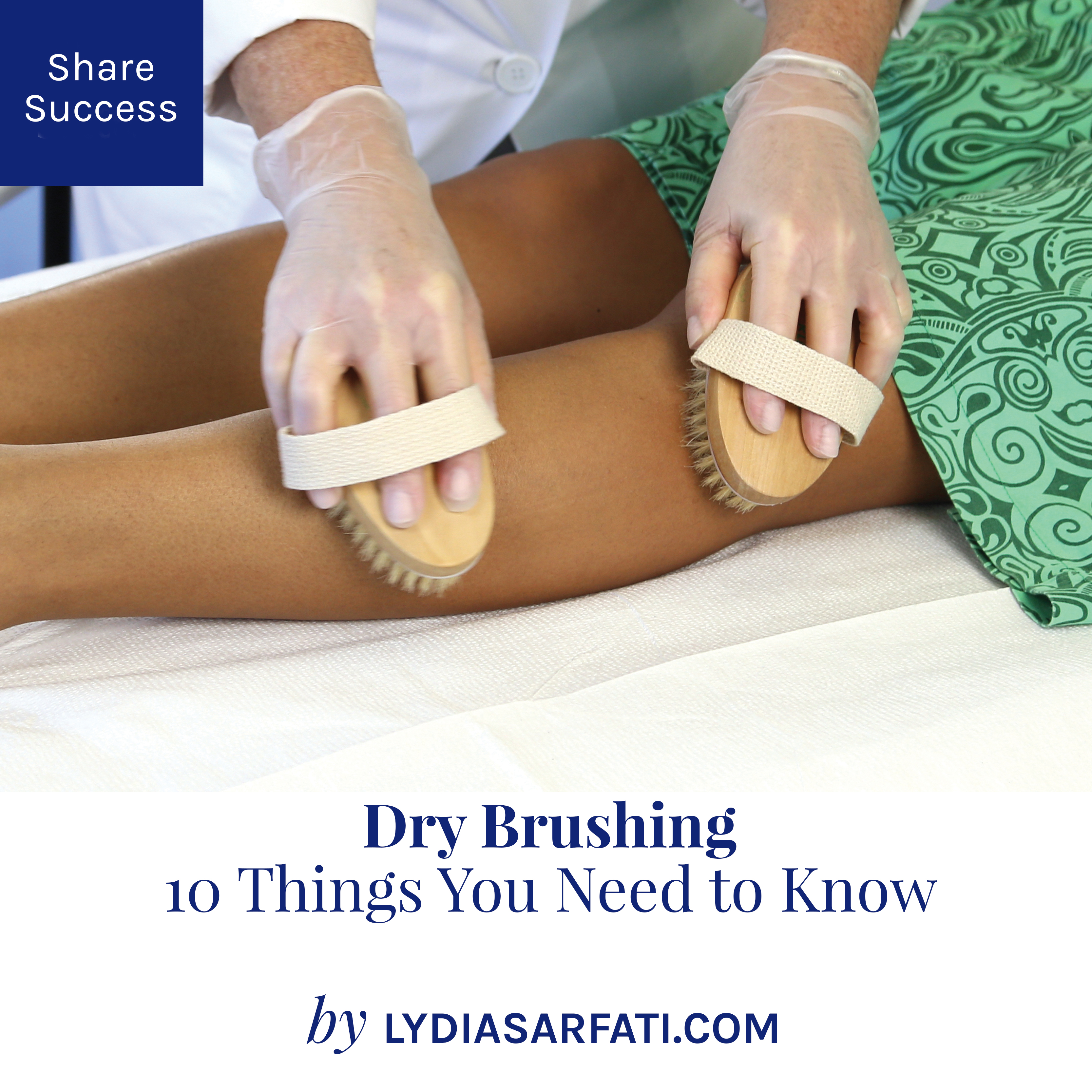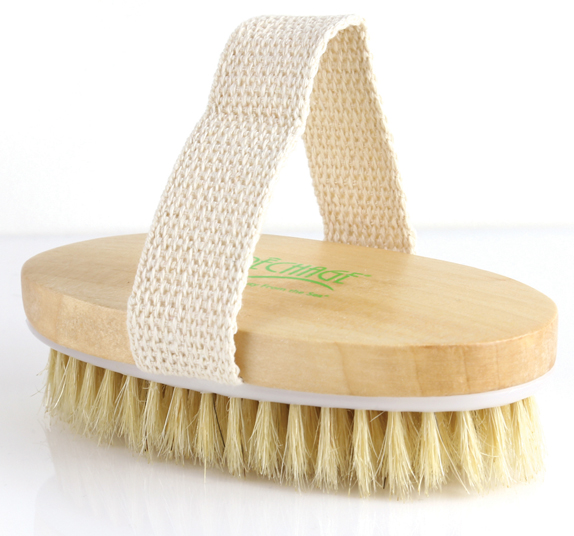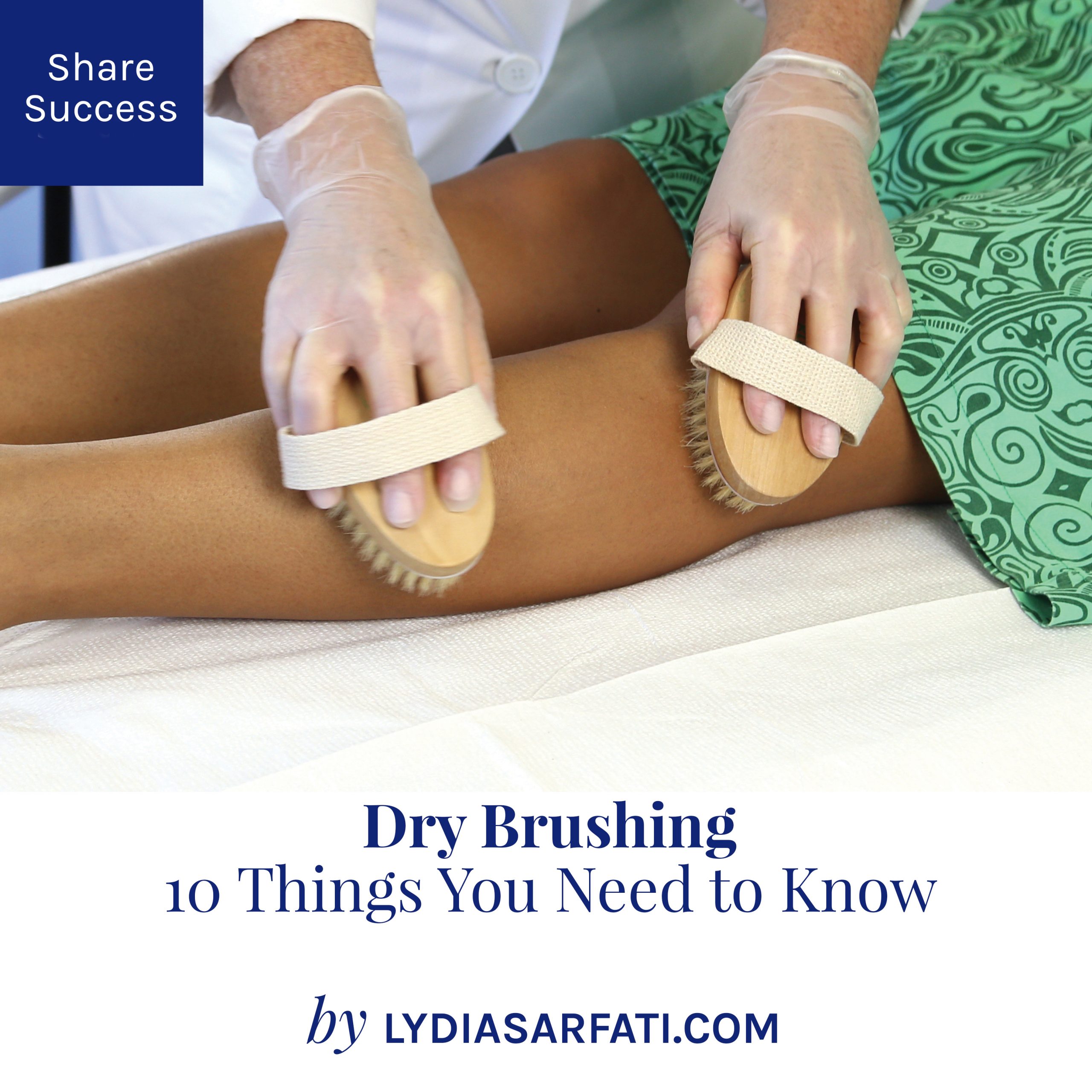
Dry brushing, as a method of cleaning and exfoliating the skin, has been around for thousands of years. Recently, dry brushing has become popular as a supplement to other healthy lifestyle practices such as yoga and meditation.
As a Master Esthetician and skin care specialist for over 40 years, dry brushing has been incorporated into my spa treatments, as well as been one of my personal daily practices throughout my career.
Some of the key benefits of drying brushing include increased energy, smoother skin and an overall better feeling. One of the best things about dry brushing is the cost: Body treatment machines, whether for the spa or at home, can cost upwards to $23,000. A body brush can cost between $12 and $32 and, if properly cared for, can last a lifetime.
Whether you are considering using a dry brush method in the salon, or at home, here is important information to know to garner the most benefits.
1. Why do you need to exfoliate?
The word exfoliate comes from the Latin word exfoliatus, ex- + folium, past participle of exfoliare, to strip of leaves. Medically, it means to cast off or remove in scales. Plump skin cells are continuously traveling from the lower layers of the epidermis to the upper layers of the stratum corneum.
When they have reached the surface, they are no longer living cells, but have become flat and scaly debris, ready to be sloughed off through a process known as desquamation. Scientists estimate that it takes about one month for a skin cell to pass through all the epidermal layers and be sloughed off. Natural exfoliation doesn’t always go smoothly, however. Age in human beings seems to slow down the cell renewal process, which causes dull, tired-looking skin.
Oily skin tends to saturate dead skin cells and makes it difficult for these dead cells to fall off naturally. Dry skin tends to let dead skin cells accumulate too quickly which can make skin look dry and dull. Environment, hormonal changes and even diet deficiencies can contribute to this as well.
2. What does dry brushing do?
Dry brushing is a vigorous form of manual exfoliation that helps loosen dead skin cells on the body, performed by rubbing the skin with a dry, stiff, natural-bristled brush. By eliminating the build-up of dead skin cells, there is an improved appearance in the tone, texture and feel of the skin.
Physically, dry brushing stimulates the nerve endings, which client’s report is invigorating. Some purport that this type of stimulation and massage assists in improving vascular blood circulation and lymphatic drainage.
By removing the surface debris, skin is better able to release waste through the surface, helping eliminate toxins. Pores are also more thoroughly cleansed, while the skin’s own natural moisturizing oils are stimulating, providing hydration. A cleaner, smoother surface also allows for better product application, such as moisturizing creams, oils and even self-tanner.
3. How long has dry brushing been around?
Dry brushing and similar concepts have been used for hundreds and thousands of years in some form or other across history and through all different cultures. Ancient Egyptians used abrasive tapes of alabaster, honey and sour milk to loosen cells, then followed with a good scrub of finely ground sand.
Since the times of the Ancient Egyptians, a variety of substances have been used to peel, exfoliate, and rejuvenate the skin. These include the use of acids, poultices of minerals and plants, and direct irritants such as fire and sand-paper like materials.
Today, dry brushes join loofahs and sisal brushes and mitts as a mechanical exfoliator everyone can enjoy.
4. How to dry brush at-home?
Dry brushing at home can be extremely beneficial. Some find that performing it in the morning before showering helps to boost energy and set a good example for self-care throughout the day.
To do this, dedicate at least 3-5 minutes to brushing.
- On bare skin, using a clean and dry brush, start at your feet and brush upward towards the through the hip area with firm strokes.
- Stop at your breast area, and dry brush your arms going upwards towards the shoulders. Your back is the only exception to the preceding rule; brush from the neck down to the lower back. (You may need long-handled brush for this.)
- For the delicate décolleté, neck and face, use a smaller dry, clean face brush.
- Use long, sweeping strokes on the arms and legs, but use circular strokes on compact areas such as the stomach, shoulders, elbows, knees, wrists, hips, and ankles.
- For the stomach, work in a counterclockwise circular motion. Pressure should be light, especially in more delicate areas such as the stomach and arm pits, although thicker skinned areas, such as the thighs, soles of the feet can take slightly more pressure.
*As a general rule, never apply pressure or brush an area where the sensation is uncomfortable or painful. If you are enjoying the process and remain comfortable, you may continue to brush for longer as desired up to 10-20 minutes.
Some prefer to do a less aggressive brushing at night, to help relax. If this sounds more in keeping with your own constitution, shower or bathe before skin brushing, the apply a few drops of moisturizing oil that contains soothing herbal extracts of vanilla and rooibos tea to the brush and perform the exfoliation. Sleep with the oil on the body.
5. What kind of brush do you use for dry brushing?

A natural bristle brush with wood oval and a natural fiber bristles is the best to use. Boar bristles are softer, easier to clean, and longer lasting than many synthetics. Oval shaped brushes fit into the palm of your hand for ease of use and to provide the right amount of pressure. Use one with a long wooden handle if you intend to include the back in your program.
Kiln dried wood is most resistant to mold and bacteria. Bristles need to be washed with mild anti-bacterial soap, avoiding the wood area. Spas and salons generally spray the bristles with 70% alcohol solution after cleaning and leave them to dry. You can do this at home, or use a spray that contains naturally anti-bacterial oils such as Tea Tree Oil.
6. How often should you dry brush?
Our skin has its own mechanisms for maintaining just the right amount of hydration and desquamation, as well as the proper pH level to create a healthy environment for soft, supple, youthful skin head to toe. If any of these factors are over-compromised, it can lead to a cascade of events that can leave skin severely damaged.
One of the most important factors to consider before entering an exfoliation program is to not compromise the skin’s own natural moisturizing factor, which is the skin’s natural protective barrier. Some advocate a 30 day daily program, then weekly for maintenance, but this is only if your skin isn’t dry or sensitive.
7. What do you do after dry brushing?
If doing with a dry brush, follow with a shower or bath to wash away the loosened material all the dry, dead skin cells that have been dislodged on the skin surface. Alternating temperatures in the shower from hot to cold could help further invigorate the skin. Follow by moisturizing with a rich body oil that contains seaweed extracts and coconut oil to help skin feel super soft and smooth.
8. When should you NOT use a dry brush?
Don’t dry brush if you are undergoing any serious medical treatments such as chemotherapy, or have any serious health condition, such as diabetes, high blood pressure or heart disease unless you speak to your doctor about it first.
Those with extremely dry skin conditions, including eczema, shouldn’t dry brush as well. Soft massage with a hydrating cream can be most beneficial for these skin types.
Don’t dry brush you’ve shaved that day already, if you’ve been in the sun or had any kind of chemical exfoliation in the area recently. If skin becomes the least bit red or irritated, you have been too aggressive.
Using a brush that is too stiff or scrubbing too hard can cause skin to become scratched, with micro cuts in the skin. Skin should never feel irritated or look red and inflamed. Stop immediately.
9. How is dry brushing used at the spa?
Besides being a great alternative to body scrubs in the spa or salon, dry brushing legs is a great before a wax treatment to prevent ingrown hairs! With this, the esthetician gently buffs the skin on the lower and upper legs for a few moments to lift of the hairs in preparation for the wax application. Hairs will grip the wax more efficiently, for a smoother depilation, and are less likely to become ingrown afterwards.
Also, because it is recommended to have a full body exfoliation before application of self tanner, it can also be used prior to application of faux tanner as part of a spa or salon service.
Dry brushing is also a great body exfoliation treatment to enjoy before a steam or sauna, helping to deep cleanse the body skin and rid it of all its debris, allowing for better perspiration.
10. How can dry brushing be used with Ayurveda?
Dry brushing has been part of body and health treatments in Ayurveda for thousands of years. Called “Garshana,” this traditional Ayurvedic dry massage is said to refresh and stimulate the skin, enhance blood circulation and the release of accumulated toxins. Typical “Garshana” treatment includes a full body massage with the dry brush, avoiding sensitive areas such as the genitals and breast area, and face.
Just like at home, the therapist uses circular strokes on the stomach and joints (shoulders, elbows, knees, wrists, hips, and ankles), and long sweeping strokes on the arms and legs. Pressure is kept extremely light, with even less pressure on delicate areas such as underarms, and is performed for about five minutes. The Garshana is completed with a shower that alternates temperature, with a few cycles of hot then cold water. This treatment is not for anyone with the above contraindications, such as heart problems or high blood pressure. A soothing, full body massage with traditional Ayurvedic oils follows to rehydrate the skin.
Reprinted from “10 Things About: Dry Brushing” published in Dermascope Magazine, April/2018.
